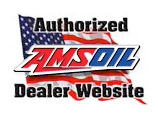23 Jul Four Types of Wear
More people are keeping their vehicles longer. Nothing is more detrimental to your vehicle than wear. Lubricating oils are your first line of defense in preventing wear. Numerous factors contribute to engine wear, but all can be categorized as one of the following. The four basic wear mechanisms are:
- abrasive
- corrosive
- adhesive
- fatigue
Abrasive Wear
Abrasive wear is caused by foreign particles entering the engine. Once inside the engine, these particles become trapped between moving parts, the piston and cylinder, which grinds against the engine metal surfaces. Wear are particles act like sandpaper, continuously, rubbing and wearing away metal surfaces by rupturing the oil film separating moving engine parts, resulting in particle to metal contact.
Abrasive wear occurs when dirt or other contaminants enter the engine through the air intake system. These contaminants cause excessive wear on rings, pistons, and cylinders. Increased cylinder and ring wear can cause blow by, which decreases compression and loss of power. An efficient filtration system can prevent abrasive wear by blocking contaminants that would enter the oil sump and find their way into the system.
Corrosive Wear
Corrosive where is the result of a chemical attack. Combustion byproducts introduced assets into the oil sump. These acids can build up in the system and oxidize or corrode the surface of sensitive areas, including lead and copper-lined bearings and other soft, yellow-metal surfaces. As the surfaces begin to corrode, they weaken and in severe cases, oxidize metallic fragments, can break free and become abrasive wear particles.
Adhesive Wear
Adhesive wear is when metal surfaces come in contact under high loads, speed or temperature. Surface irregularities, called aspirates, touch and weld momentarily, then break off as the surfaces separate. The load applied to the two points of contact is so high that they bend and adhere to one another. Rough metal surfaces with larger microscopic hills and valleys are more susceptible to this type of wear. Adhesive wear can result in scuffing, scoring a seizure.
Fatigue Wear
Fatigue wear originates from a situation, where the lubricating film is in place, but recurring stress like vibration or shock-loading causes cracks or pits over time. This is a common type of wear found in equipment that frequently starts and stops or changes speeds. Fatigue wear develop in rolling element bearings as they pass over a stressed area repeatedly and ultimately develop cracks that release small bits of metal overtime, leaving holes are pits in the surface. These holes or pits grow and connect, resulting in large losses of surface metal and catastrophic damage.
Regardless of equipment type, bearings, gears and cylinders are susceptible to wear and thus require high-quality lubrication protection. Choosing the proper viscosity for your oil will aid in wear protection by reducing the likelihood of metal to metal contact. A full synthetic base oil provides a higher viscosity index for improved sheer stability. Oil film strength is also a key wear protection property. Adequate film strength provides a lubricant barrier between moving parts, ensuring friction is greatly reduced.
Amsoil Synthetic lubricants offer outstanding wear prevention which helps vehicles last longer.

